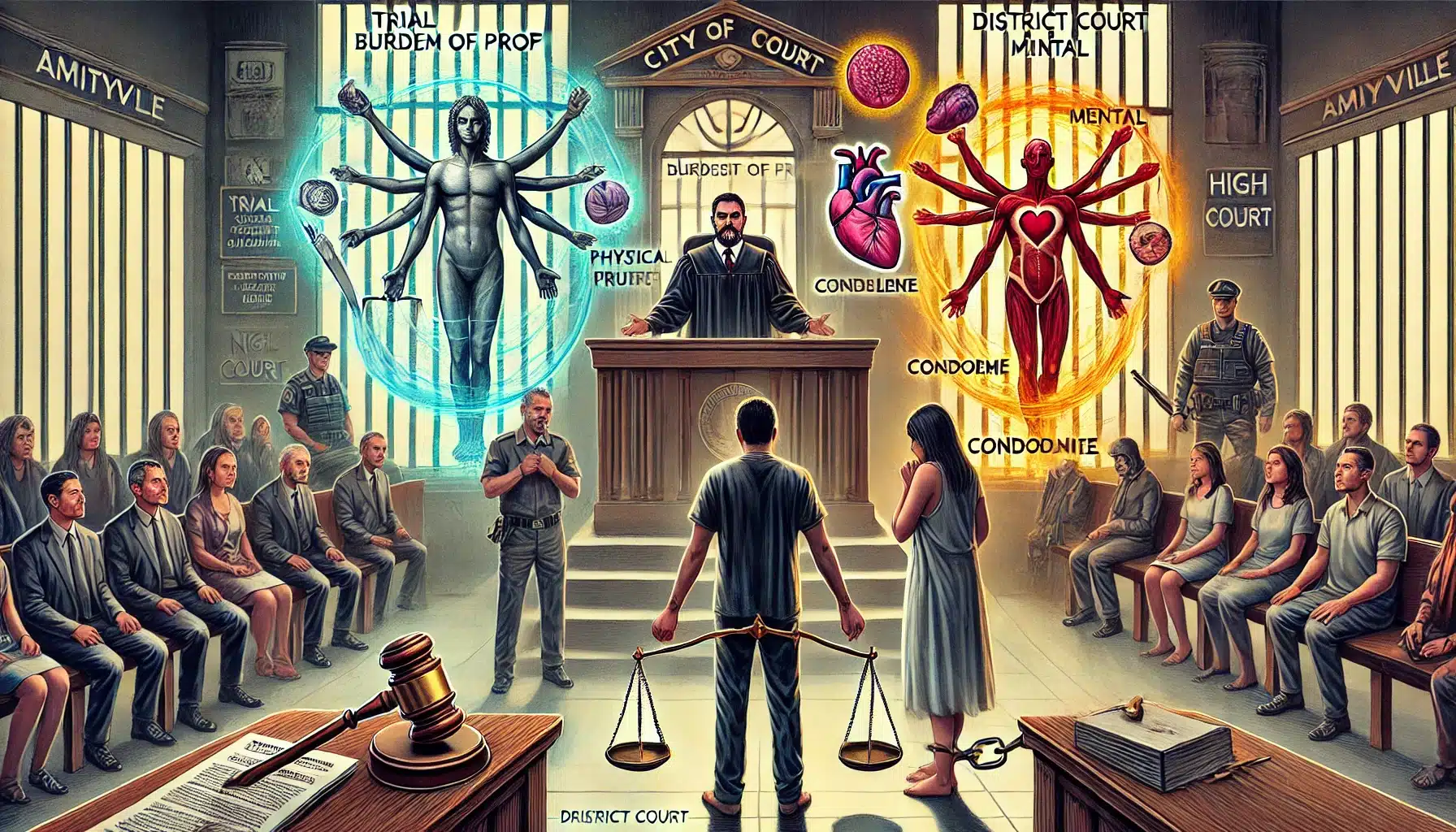In the landmark case Dr. N.G. Dastane v. Mrs. S. Dastane, the Supreme Court addressed issues of cruelty, burden of proof, and condonation within marriage under the Hindu Marriage Act. The court established that the petitioner must prove cruelty by a preponderance of probability, not beyond a reasona

Citation: (1975) 2 SCC 326.
Date of Judgment: 19th March 1975
Court: Supreme Court of India
Bench: Justice Y.V. Chandrachud, Justice P.K. Goswami, Justice N.L. Untwalia
Facts
- The spouses are highly educated and come from respectable families. The wife’s father disclosed before the marriage that she had been treated for sunstroke and cerebral malaria. The husband later alleged the wife to be suffering from schizophrenia
- The couple had three daughters together. One of the daughters was born after leaving the matrimonial home.
- The wife exhibited signs of temper and lack of self-control throughout the marriage. Further, the couple separated in February 1961.
- The husband (appellant) approached the court and sought a decree of nullity pursuant to Section 12(1)(c) of the Hindu Marriage Act, 1955. The appellant contended that his consent to the marriage was obtained by fraud.
- Alternatively, the appellant asked for a divorce remedy under Section 13(1)(iii) on the grounds that the respondent was of unsound mind.
- The appellant sought another alternative remedy of Judicial Separation under Section 10(1)(b) on the grounds of cruelty.
Decision of the Trial Court
The trial court rejected the appellant’s argument that his wife was of unsound mind. However, the court accepted that the respondent is guilty of cruelty. Accordingly, the trial court passed a decree of judicial separation.
Judgment of the District Court
The District Court wholly rejected the appellant’s plea.
Decision of the High Court
A learned Single Judge of the Bombay High Court dismissed the appeal. This court granted special leave to appeal to the appellant. The court further stated that such an appeal should be restricted only to the issue pertaining to judicial separation on the grounds of cruelty.
Decision of the Supreme Court
The judgment establishes that the petitioner bears the burden of proving cruelty by a preponderance of probability, not beyond reasonable doubt. Furthermore, cruelty is not limited to physical abuse but encompasses mental cruelty as well, which can manifest in various forms of emotional harm. The court also recognized the concept of condonation, where continued cohabitation after knowledge of cruelty can be seen as forgiveness. The judgment also emphasizes that cruelty is not defined by a single act but by a pattern of behavior that negatively impacts the petitioner’s well-being. Given the subjective nature of cruelty, courts must assess each case individually, considering the unique circumstances and the impact on the petitioner.
Key legal issues discussed
1. Does the burden of proof lie upon the petitioner?
Yes
The court, while addressing the issue of the burden of proof, categorically affirmed that it is the responsibility of the petitioner. In the 23rd para of the judgment, the court remarked, “Doubtless, the burden must lie on the petitioner to establish his or her case for, ordinarily, the burden lies on the party which affirms a fact, not on the party which denies it.” The court reasoned that proving a positive over a negative is much easier. Therefore, it is the duty of the petitioner to prove that the respondent has treated him with cruelty, pursuant to which he has filed for a decree of judicial separation under Section 10(1) of the Hindu Marriage Act (hereinafter referred to as H.M.A.).
Now, the question lies: does the petitioner need to prove it beyond reasonable doubt as held by the Bombay High Court? The apex court answered that proving beyond a reasonable doubt is not required. The petitioner must prove the circumstances, and the court will examine the probability considering those circumstances. Therefore, the petitioner must prove a mere preponderance of probability and not beyond a reasonable doubt.
As per Section 3 of the Indian Evidence Act, a fact can be said to be proved if the court is satisfied that it exists and such that a reasonable prudent man is supposed to act on its existence. While examining Section 10 H.M.A. and Section 23 H.M.A. (jurisdiction of the court to pass decree), the court found out that neither of the sections confers a duty upon the respondent to prove facts beyond a reasonable doubt.
2. Does cruelty constitute only physical cruelty?
No
The concept of cruelty is inherently tied to the specific legal framework under which it is assessed. In the context of the H.M.A., cruelty encompasses a spectrum of behaviors that can inflict both physical and emotional harm.
Physical cruelty, characterized by acts of violence or bodily harm, is a clear and recognizable form of abuse. However, cruelty extends beyond physical manifestations and encompasses the psychological torment inflicted through emotional abuse. This can involve persistent criticism, humiliation, intimidation, or the erosion of one’s self-esteem.
To establish cruelty, it is imperative to demonstrate that the respondent’s conduct has created a genuine and pervasive fear for the petitioner’s safety and well-being. This fear must be objectively reasonable, grounded in the specific circumstances of the relationship, and such that continued cohabitation would pose a substantial risk to the petitioner’s physical or mental health.
3. Did the court regard condonation in this matter?
Yes
The appellant has contended that there was no condonation, whereas it is found implicit in the respondent’s argument. As per Section 23(1)(b) of the H.M.A., the appeal can be dismissed if cruelty is condoned. The fact that the respondent was three months pregnant when she left the home in 1961 implies the act of condonation on the part of the appellant. The court answered the question in the 57th para of the judgment, observing that “The evidence of condonation consists here in the fact that the spouses led a normal sexual life despite the respondent’s -acts of cruelty. This is not a case where the spouses, after separation, indulged in a stray act of sexual intercourse, in which case the necessary intent to forgive and restore may be said to be lacking.”
The court had defined condonation as forgiveness of matrimonial offence and restoration of the offending spouse to the same position he or she occupied before the offence was committed. The court has affirmed that there is strong evidence of condonation in the present case, as strong as the presence of cruelty.
The evidence of condonation is implicit in the fact that spouses have led a normal sexual life despite the respondent’s cruel acts. It is not the case where both spouses have indulged in a stray act of sexual intercourse after separation. Instead, both spouses have performed such acts during their cohabitation. This shows condonation on the part of the appellant.
4. Does cruelty consist of a single act?
No
Cruelty is inherently subjective, making it a complex issue to define and assess. The landmark case of Samar Ghosh v. Jaya Ghosh[1] underscored this complexity, emphasizing that what constitutes cruelty is heavily influenced by individual circumstances. Factors such as upbringing, education, cultural background, socioeconomic status, and personal values all play a crucial role in shaping one’s perception and experience of cruelty.
Moreover, the nature of mental cruelty is dynamic, evolving with societal shifts and changing norms. Conduct deemed cruel today could have been considered acceptable in the past. This fluidity underscores the challenge of establishing a rigid framework for determining cruelty. Consequently, courts must approach each case with a nuanced understanding, considering the unique circumstances and the subjective experiences of the parties involved.
The court further highlighted that illustrative examples of cruelty can be provided but should not be treated as definitive criteria. The absence of a specific act from a predefined list does not preclude a finding of cruelty.
[1] (2007) 4 SCC 511.


